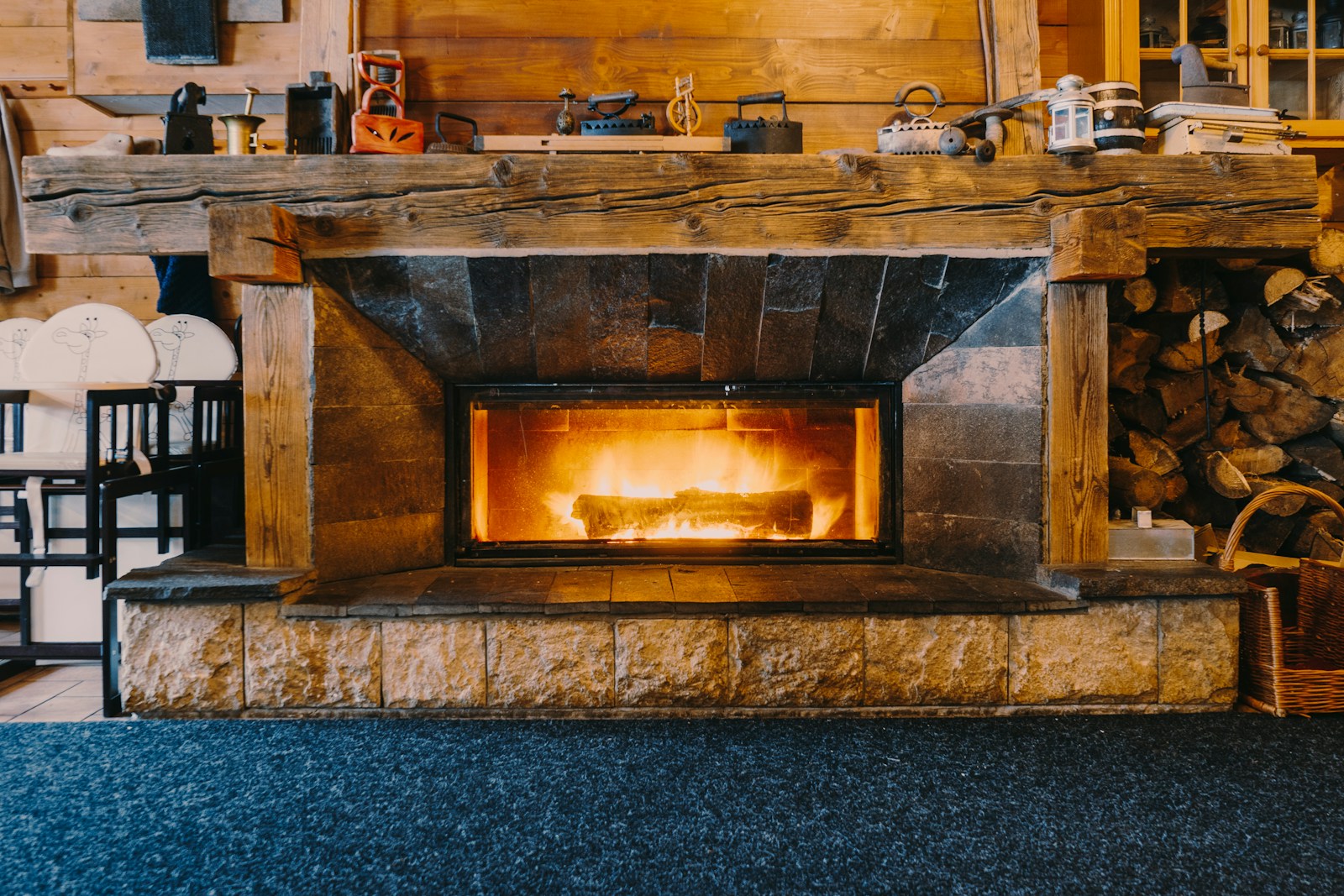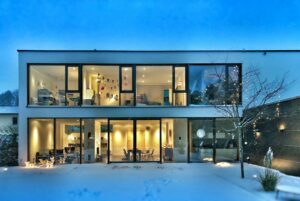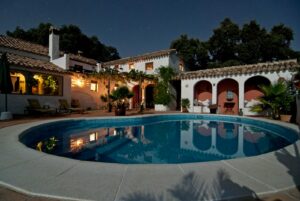TL;DR:
– Rustic Home embodies sustainability and coziness through natural materials and earthy hues.
– Energy-efficient technologies like solar power and insulation are crucial for modern rustic design.
– Mindful design principles maximize natural light and utilize reclaimed materials for a functional space.
– Sustainable living practices such as composting and rainwater harvesting enhance eco-friendliness.
– Modern amenities like smart home automation and eco-friendly heating elevate rustic living.
Introduction
Welcome to the realm of sustainable living and transformative design! In the world of architectural innovation, the concept of a Rustic Home has evolved into a symbol of harmony between traditional charm and contemporary eco-consciousness. As we delve into the five groundbreaking ideas for modern sustainable living within rustic settings, we will explore the fusion of natural materials, energy-efficient technologies, and mindful design principles. Join me on this journey as we unlock the secrets of creating a Rustic Home that not only embraces the past but also paves the way for a greener, more sustainable future. Let’s embark on this aesthetic and environmental adventure together!
The Essence of Rustic Home Design
Are you drawn to the charm and warmth of rustic homes? Embracing the beauty of natural elements, a rustic home design captures the essence of simplicity and coziness. Incorporating natural materials like wood, stone, and metal helps create a harmonious blend with the environment. Earthy color palettes, including warm browns, soft greens, and muted tones, enhance the inviting atmosphere of rustic interiors. By focusing on the use of organic materials and warm colors, rustic home design provides a sanctuary that feels like a retreat from the modern world.
Incorporating Natural Materials
– Utilize reclaimed wood for flooring, furniture, and accent pieces.
– Incorporate stone elements like fireplaces or exposed brick walls.
– Integrate metal accents such as iron light fixtures or copper sinks.
Embracing Earthy Color Palettes
– Opt for warm tones like terracotta, sage green, or burnt sienna.
– Use natural hues inspired by the surrounding landscape.
– Create a cohesive color scheme that reflects the beauty of nature.
Enhancing the Cozy Atmosphere
– Incorporate plush textiles like wool rugs, cozy blankets, and soft cushions.
– Install a wood-burning fireplace or a gas stove for warmth and ambiance.
– Add personal touches like handmade pottery or woven baskets for a touch of rustic charm.
Energy-Efficient Technologies for Rustic Homes
In the quest for sustainable living, rustic homes can benefit greatly from energy-efficient technologies. By integrating innovative solutions, homeowners can reduce their environmental impact while enjoying the charm of rustic design. Let’s explore some key technologies that can enhance the energy efficiency of rustic homes.
Solar Power Systems
– Installing solar panels on a rustic home can harness the power of the sun to generate clean energy.
– Solar power systems can provide electricity for lighting, appliances, and heating, reducing dependence on traditional grid power.
Energy-Efficient Appliances
– Choosing energy-efficient appliances, such as refrigerators, washing machines, and HVAC systems, can significantly reduce energy consumption.
– Look for appliances with Energy Star ratings to ensure minimal energy wastage.
Proper Insulation and Ventilation
– Ensuring adequate insulation in a rustic home helps maintain a comfortable indoor temperature and reduces the need for heating and cooling.
– Proper ventilation systems can regulate air circulation and improve indoor air quality, creating a healthier living environment.
By incorporating these energy-efficient technologies, rustic homes can become more sustainable and environmentally friendly, blending modern convenience with timeless design.
Mindful Design Principles for a Rustic Home
Are you drawn to the charm of rustic homes but want to ensure they are designed with sustainability in mind? Incorporating mindful design principles can enhance the beauty and functionality of your rustic abode while minimizing its environmental impact. Let’s explore how you can create a harmonious living space that embodies the essence of rustic living.
Maximizing Natural Light
– Position windows strategically to allow natural light to flood your home.
– Consider installing skylights or light tubes to brighten up interior spaces.
– Opt for light, sheer curtains that allow sunlight to filter through while providing privacy.
Utilizing Reclaimed Materials
– Explore using reclaimed wood for flooring, furniture, and decor elements.
– Incorporate salvaged bricks, stones, or metal accents to add character to your home.
– Choose vintage or upcycled fixtures and accessories to give your space a unique touch.
Creating Functional Outdoor Spaces
– Design outdoor living areas that seamlessly blend with the natural surroundings.
– Include sustainable landscaping features such as native plants and rain gardens.
– Build a vegetable garden or herb planter to connect with nature and promote self-sufficiency.
By implementing these mindful design principles, you can transform your rustic home into a sustainable sanctuary that reflects your commitment to eco-friendly living. Embrace nature-inspired elements and thoughtful practices to create a space that nurtures both you and the environment.
Sustainable Living Practices in Rustic Homes
Rustic homes are not only calming and evocative of a simpler time, but they can also play a pivotal role in sustainable living. By practicing mindful waste management and maximizing homegrown produce, residents can help to ensure the sustainability of their rustic homes.
Composting and Waste Management
Taking care of the environment starts from your doorstep. One of the simple yet highly effective ways to manage waste is through composting. Rustic homeowners can commit to composting food scraps and yard waste, instead of sending them off to a landfill. This strategy not only reduces methane emissions but also enriches your soil, thus promoting the growth of your organic garden.
Rainwater Harvesting Systems
Rustic homes have an added advantage when it comes to installing rainwater harvesting systems. These homes, often set in naturally abundant surroundings, can gather and reuse rainwater for watering plants, flushing toilets, and in some cases, even for washing clothes. This practice aids in decreasing your water bills, conserving water, and reducing stormwater runoff.
Organic Gardening
Last but certainly not least, organic gardening is a cornerstone of sustainable rustic living. By avoiding synthetic fertilizers and pesticides, rustic homeowners can grow food that’s healthier for their families and the planet. Organic gardening also improves soil health, promotes biodiversity, and reduces carbon footprint. Ultimately, coupling rustic home living with sustainable practices results in a win-win situation for both the homeowner and the environment.
The Essence of Rustic Home Design
Are you drawn to the charm of a rustic home that blends seamlessly with nature? Rustic home design captures the essence of organic beauty and cozy living. Let’s explore how incorporating natural materials, earthy color palettes, and a warm atmosphere can elevate your living space.
Incorporating Natural Materials
– Wood, stone, and other natural materials bring a sense of warmth and authenticity to rustic homes.
– Elements like exposed beams, reclaimed wood, and stone accents create a connection to the outdoors.
Embracing Earthy Color Palettes
– Earth tones such as browns, greens, and neutrals mimic the natural environment.
– Warm and inviting colors enhance the rustic ambiance, creating a relaxing atmosphere.
Enhancing the Cozy Atmosphere
– Soft textures, cozy fabrics, and plush furnishings add comfort to rustic spaces.
– Elements like a fireplace, soft lighting, and natural decor elements create a welcoming and cozy feel.
Next, let’s explore how energy-efficient technologies can complement the rustic charm of your home.
Conclusion:
In the realm of modern sustainable living, the Rustic Home concept offers a harmonious blend of nature-inspired design and eco-conscious practices. From repurposed wood accents to energy-efficient solutions, the transformative ideas showcased in this article embody the essence of Rustic Home living. Embrace the timeless charm and environmental benefits of Rustic Home design to create a sanctuary that nurtures both your well-being and the planet. Dive deeper into the world of Rustic Home to unlock endless possibilities for sustainable living and conscious design choices. Explore how Rustic Home can elevate your lifestyle and connect you to the beauty of nature.










